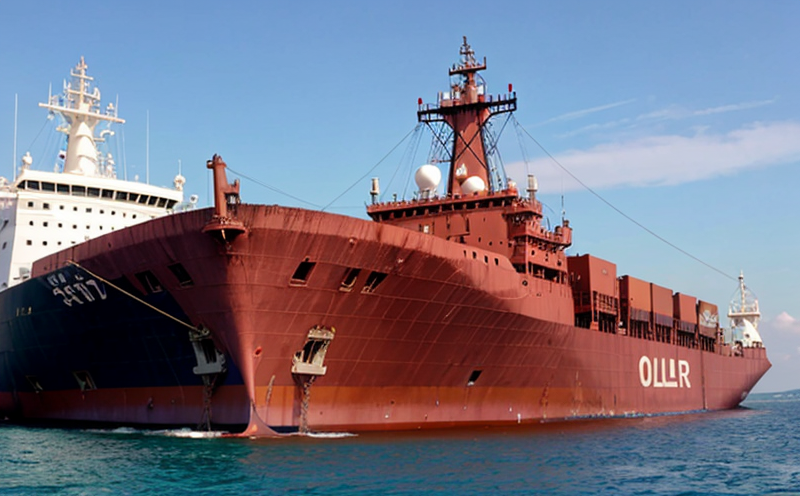Oil tanker vessel inspection
The integrity and reliability of oil tankers are critical to ensure safe transportation and compliance with global maritime regulations. Oil tanker vessel inspections encompass a range of non-destructive testing (NDT) methods aimed at identifying structural defects, corrosion, and other anomalies that could compromise the safety and efficiency of these vessels.
Our comprehensive inspection services utilize advanced technology such as ultrasonic testing, radiographic testing, magnetic particle inspection, and visual examination to ensure compliance with international standards like ISO 9712 and ASTM E384. This meticulous approach guarantees that any potential issues are addressed before they escalate into major concerns.
During an oil tanker vessel inspection, the first step is to prepare the surface of the structure for testing. This may involve cleaning or preparing the area to ensure accurate results from the chosen NDT method. The next phase involves selecting the appropriate equipment based on the specific requirements of each inspection type. For instance, ultrasonic testing requires precise calibration and application, while radiographic inspections necessitate stringent safety protocols.
The interpretation of test data is crucial in determining the condition of the vessel's hull and other critical components. Our team uses sophisticated software to analyze images and readings from various tests, ensuring that every detail is accounted for in our final report. Compliance with regulatory requirements such as SOLAS (International Convention for the Safety of Life at Sea) and IACS (International Association of Classification Societies) standards ensures that all inspections meet industry benchmarks.
Following completion of each inspection, we provide detailed reports outlining findings along with recommendations for necessary repairs or maintenance actions. These reports are essential tools for ship owners and operators to maintain their fleet's operational readiness while adhering to stringent environmental protection measures outlined by organizations like the International Maritime Organization (IMO).
Why Choose This Test
- Comprehensive assessment of structural integrity and corrosion levels.
- Ensures adherence to international maritime safety standards.
- Reduces risk of accidents due to undetected flaws or failures.
- Promotes efficient vessel operations by identifying potential issues early.
- Supports compliance with environmental protection regulations.
Selecting our oil tanker vessel inspection service offers peace of mind for stakeholders involved in maritime transport. By choosing us, you gain access to expert knowledge and cutting-edge technology that can help safeguard lives at sea and protect the environment from pollution caused by operational inefficiencies or accidents involving these vessels.
Customer Impact and Satisfaction
- Increased confidence in vessel safety through rigorous inspections.
- Enhanced reputation among clients due to demonstrated commitment to high standards.
- Cost savings from preventing costly repairs or replacements caused by delayed maintenance.
- Better resource allocation for fleet management based on accurate inspection data.
Use Cases and Application Examples
| Use Case | Description |
|---|---|
| Pre-Charter Inspections | Conduct thorough examinations before new or refurbished tankers enter service to ensure they meet all regulatory requirements. |
| Regular Maintenance Checks | Periodic evaluations to monitor the gradual wear and tear of vessel components, allowing for timely interventions. |
| In-Service Troubleshooting | Quick diagnosis of specific issues reported by crew members or detected through other monitoring systems. |
| Post-Accident Assessments | Detailed analysis following incidents to identify root causes and implement corrective measures. |





